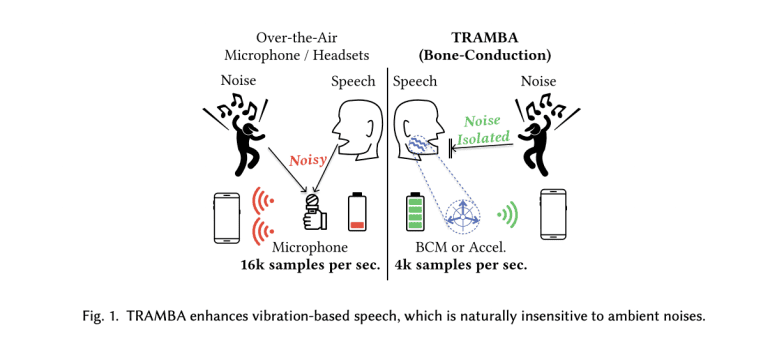- TRAMBA, a hybrid transformer and Mamba architecture, transforms speech enhancement for mobile and wearable devices.
- Wearables market projected to soar from 70 billion USD in 2023 to 230 billion USD by 2032.
- TRAMBA addresses challenges of background noise in speech capture, offering real-time operation and power efficiency.
- Integrates modified U-Net structure, self-attention mechanisms, and Mamba for superior performance.
- Outperforms conventional models across various metrics, showcasing efficiency in enhancing speech formants and noise reduction.
Main AI News:
The dynamic landscape of wearables has reshaped the interaction between humans and technology, ushering in an era of continuous health monitoring. Projections indicate a remarkable surge in the wearables market, poised to catapult from 70 billion USD in 2023 to a staggering 230 billion USD by 2032. Within this realm, head-worn devices, encompassing earphones and glasses, are experiencing exponential growth, with figures expected to skyrocket from 71 billion USD in 2023 to an impressive 172 billion USD by 2030. This meteoric rise is propelled by the escalating significance of wearables, augmented reality (AR), and virtual reality (VR) technologies.
Capturing speech signals in head-worn wearables presents a unique challenge traditionally addressed by over-the-air (OTA) microphones positioned near or on the head. However, these microphones often capture unwanted background noise, especially in noisy environments, potentially undermining speech quality. Various research efforts have endeavored to mitigate this issue through denoising and speech enhancement techniques. Yet, the prevalent diversity of background noises and the ubiquity of noisy settings pose significant hurdles to existing models.
Enter TRAMBA, a groundbreaking hybrid transformer and Mamba architecture developed by researchers from Northwestern University and Columbia University. Designed to enhance acoustic and bone conduction speech in mobile and wearable platforms, TRAMBA represents a paradigm shift in speech processing technology. Unlike conventional methods, TRAMBA leverages a unique pre-training approach on widely available audio speech datasets, followed by fine-tuning with bone conduction data, overcoming previous performance gaps.
At its core, TRAMBA combines a modified U-Net structure with self-attention mechanisms in downsampling and upsampling layers, complemented by Mamba in the narrow bottleneck layer. This innovative architecture operates seamlessly on single-channel audio data, preprocessing acceleration data from a wearable accelerometer. Notably, TRAMBA achieves real-time speech super-resolution while significantly reducing power consumption, a feat previously unattainable in the realm of wearable speech enhancement.
In terms of performance, TRAMBA outshines conventional models across various metrics and sampling rates, showcasing its superiority over U-Net architectures. While the Aero GAN method marginally surpasses TRAMBA in certain metrics, TRAMBA excels in perceptual and noise metrics, underscoring its efficacy in enhancing speech formants. Moreover, TRAMBA’s efficient processing capabilities enable real-time operation, a crucial advantage over competing models like Aero GAN.
Conclusion:
TRAMBA’s introduction signifies a monumental shift in speech enhancement technology, particularly for mobile and wearable platforms. Its ability to tackle background noise and deliver real-time operation while significantly reducing power consumption sets a new benchmark in the industry. With the wearables market poised for exponential growth, TRAMBA’s innovation promises to drive further advancements, cementing its position as a game-changer in the realm of speech processing.

